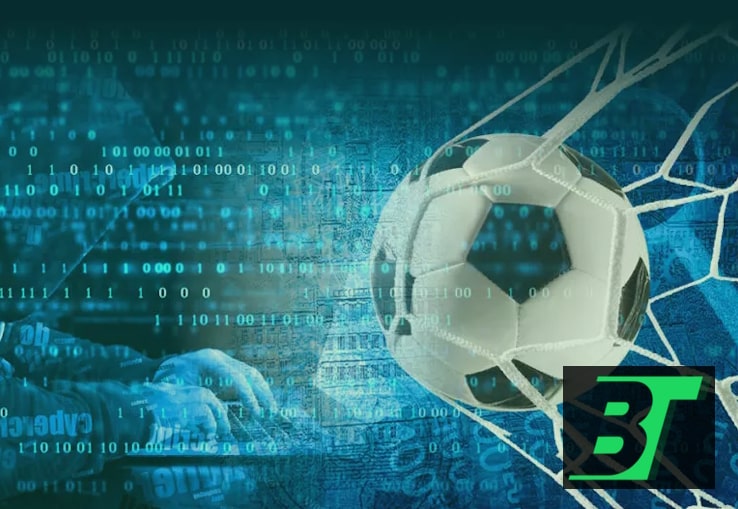
Discover how football clubs are combating cyber threats in the digital era. Learn about safeguarding sensitive data, protecting match integrity, and innovative solutions to secure the sport future.
The world of football has evolved significantly over the past few decades. What was once solely about passion on the pitch now also involves cutting-edge technology off it. As clubs, leagues, and governing bodies embrace digital transformation to enhance fan engagement, streamline operations, and improve performance analysis, they also become more vulnerable to cyber threats. Cybersecurity in football has, therefore, emerged as a critical aspect of managing a modern sports organization.
Football clubs today use an array of digital tools and platforms. These include advanced data analytics for performance optimization, digital ticketing systems, online merchandising, and interactive social media channels that connect clubs with millions of fans worldwide. Moreover, stadiums have evolved into smart arenas equipped with IoT devices that monitor everything from crowd management to energy consumption. However, as football becomes more intertwined with technology, it also opens up multiple avenues for cybercriminals to infiltrate these systems.
Cyber threats in football can manifest in several forms. One prevalent issue is data breaches. Football clubs maintain sensitive information about players, staff, and fans, including personal data and financial details. A breach not only compromises privacy but can also lead to reputational damage and financial loss. In some cases, hackers have targeted clubs to steal proprietary tactical information, which could potentially be used by rival teams to gain an edge in competitions.
Ransomware is another serious threat. In recent years, several high-profile cyberattacks on sports organizations have involved ransomware, where attackers encrypt critical data and demand a ransom for its release. This can disrupt operations significantly, especially during important match days or tournaments. Additionally, phishing schemes often target club executives and staff, aiming to trick them into divulging sensitive login credentials or financial information.
Beyond operational disruptions, cybersecurity issues in football can directly affect the integrity of the sport. Unauthorized access to club systems can lead to the manipulation of match outcomes. Cybercriminals might tamper with data feeds used in live match tracking, potentially influencing in-play betting markets. This not only undermines the fairness of the game but also shakes the confidence of fans, bettors, and sponsors alike.
Furthermore, with the rise of online betting, there is an increased risk of match-fixing, where cyberattacks could be used to alter data or communication between betting agencies and teams. The interconnected nature of modern football means that a cyber breach can have ripple effects across multiple stakeholders, jeopardizing the sport's reputation on a global scale.
Many football organizations, especially smaller clubs with limited resources, struggle to keep pace with evolving cyber threats. Legacy IT systems, which are often outdated and vulnerable, remain in use because of budget constraints. These systems can be a soft target for cybercriminals who know that the defenses may not be as robust as those in other industries.
Another challenge is the lack of specialized cybersecurity knowledge within many organizations. While clubs invest heavily in sports science and talent development, investment in cybersecurity is often overlooked. This gap leaves them exposed to sophisticated attacks that require not just technology fixes but also a strategic approach to managing cyber risk.
To address these challenges, football organizations need to adopt a multi-layered approach to cybersecurity. This begins with comprehensive risk assessments to identify potential vulnerabilities in IT systems and data management practices. Implementing robust firewalls, intrusion detection systems, and regularly updating software are essential first steps in safeguarding digital assets.
Employee education is another critical element. Regular training sessions on cybersecurity awareness can help staff recognize phishing attempts and other common attack vectors. Additionally, enforcing strong password policies and multi-factor authentication can significantly reduce the risk of unauthorized access.
Many clubs are also turning to partnerships with specialized cybersecurity firms. These firms provide expert advice, continuous monitoring, and incident response services that can mitigate the damage of an attack. In a rapidly evolving threat landscape, collaboration between the sports industry and cybersecurity experts is paramount to staying ahead of potential risks.
National and international sports regulatory bodies are beginning to take notice of the cybersecurity challenges in football. Initiatives aimed at developing industry-wide standards for digital security are underway. These standards not only help protect clubs and organizations but also ensure that the sport remains fair and trustworthy for fans and stakeholders.
Looking ahead, the integration of artificial intelligence and machine learning into cybersecurity strategies promises to revolutionize how clubs detect and respond to threats. These technologies can analyze vast amounts of data in real time, identifying anomalies that may indicate a cyberattack. As these tools become more sophisticated, they will play a crucial role in safeguarding the digital infrastructure that underpins modern football.
Cybersecurity in football is no longer a niche concern but a fundamental component of running a successful sports organization in the digital era. From protecting sensitive player data to ensuring match integrity and securing fan engagement platforms, the challenges are numerous and evolving. As the beautiful game continues to embrace technology, clubs and governing bodies must invest in robust cybersecurity measures. By doing so, they can ensure that football remains a safe, fair, and enjoyable experience for everyone from the players on the pitch to the millions of fans watching around the world.